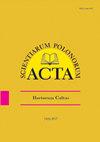蓝光和纳米银对Napoli Alstroemeria切花花瓶寿命、抗氧化酶及其他一些生理参数的影响
IF 0.6
4区 农林科学
Q4 HORTICULTURE
引用次数: 2
摘要
采后蓝光照射对切花的影响从未被研究过,因此本研究旨在探讨蓝光照射时间(6、12、18和24 h)和纳米银颗粒(5、10、15和20 mg l−1)对Alstroemeria ' Napoli '切花数量和质量性状的影响。对照花接受没有蓝光照射的蒸馏水。10 mg l−1 SNP与最长花瓶寿命(22.66 d)相关,与12 h蓝光暴露(22.00 d)和20 mg l−1 SNP (21.66 d)无显著差异。当SNP浓度为10 mg l−1或蓝光照射12 h时,花的吸水率和叶绿素含量最高,乙烯含量最低。这两种处理在减少MDA积累方面也优于对照。蓝光处理12 h、蓝光处理18 h或SNP处理15 mg l−1的花APX活性显著升高。除了蓝光照射6小时外,所有处理都比对照组减少了茎端细菌。15 mg l−1 SNP处理的花朵细菌数量最少(57.3 Log10 CFU ml−1)。蓝光在阻止革兰氏阳性细菌和酵母生长方面优于SNP。在此基础上,引入蓝光作为物理因子,改善了纳波里桤木切花的数量和质量性状。本文章由计算机程序翻译,如有差异,请以英文原文为准。
Effect of blue light and nanosilver on vase life, antioxidant enzymes and some other physiologic parameters of Alstroemeria ‘Napoli’ cut flowers
The effects of postharvest blue light exposure have never been studied on cut flowers, so the present study aimed to explore the effects of blue light exposure duration (6, 12, 18, and 24 h) and silver nanoparticle (SNP) application (5, 10, 15, and 20 mg l−1) on the quantitative and qualitative traits of cut Alstroemeria ‘Napoli’ flowers. The control flower received distilled water without blue light exposure. The longest vase life (22.66 days) was related to 10 mg l−1 SNP, not differing from 12 h of blue light exposure (22.00 days) and 20 mg l−1 SNP (21.66 days), significantly. The highest water uptake and total chlorophyll and the lowest ethylene were obtained from the flowers treated with 10 mg l−1 SNP or exposed to 12 h of blue light. These two treatments outperformed the control in reducing MDA accumulation too. APX activity was significantly higher in the flowers treated with 12 h of blue light exposure, 18 h of blue light exposure, or 15 mg l−1 SNP. Except for the blue light exposure for 6 h, all treatments reduced stem-end bacteria versus the control. The lowest bacterial population (57.3 Log10 CFU ml−1) belonged to the flowers treated with 15 mg l−1 SNP. Blue light outperformed SNP in stopping the growth of Gram-positive bacteria and yeast. Based on the results, blue light is introduced as a physical factor to improve the quantitative and qualitative traits of cut Alstroemeria ‘Napoli’ flowers.
求助全文
通过发布文献求助,成功后即可免费获取论文全文。
去求助
来源期刊
CiteScore
1.30
自引率
14.30%
发文量
61
审稿时长
4-8 weeks
期刊介绍:
In Acta Scientiarum Polonorum Hortorum Cultus we publish original research papers and review articles containing new and significant information on broad aspects of horticulture and related disciplines. The papers are published in English only, in six issues yearly.

 求助内容:
求助内容: 应助结果提醒方式:
应助结果提醒方式:


